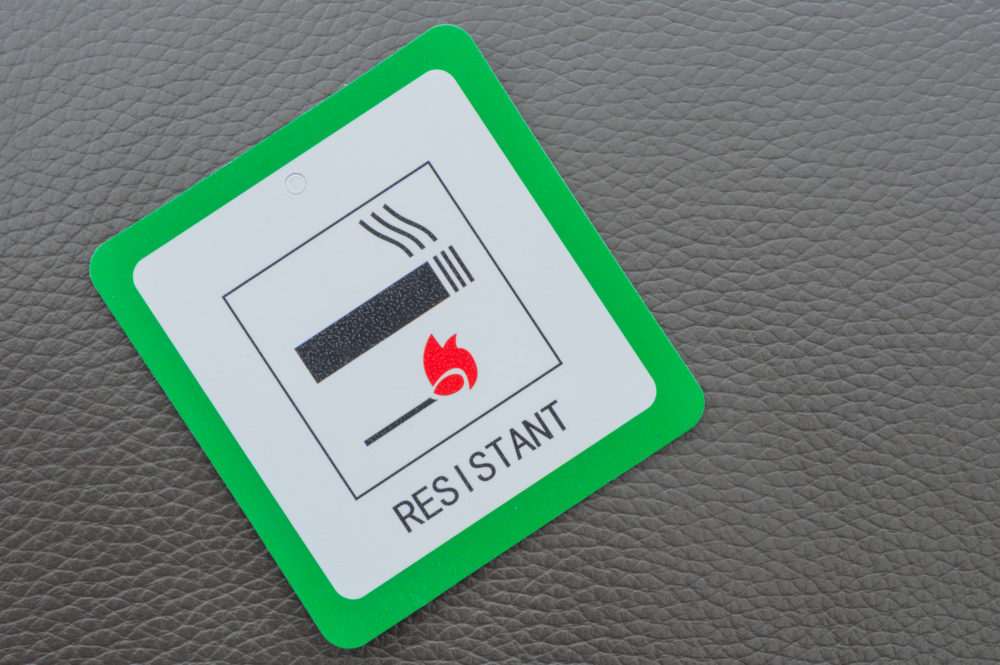EPA Calls for More Regulation of Some Flame Retardants Due to Health Risks
The EPA has determined uses of some flame retardants which use the chemical HBCD may pose an unreasonable risk to workers in some uses.

In response to growing concerns about health risks from flame retardants, federal officials have conducted a new assessment of the risks associated with certain chemicals, and say they plan to introduce increased regulatory actions to protect the public.
The U.S. Environmental Protection Agency (EPA) published a notice in the Federal Register today, announcing a revision to the risk determination for the overall use Cyclic Aliphatic Bromide Cluster, also known as hexabromocyclodecanes (HBCD). The risk assessment was required under the Toxic Substances Control Act (TSCA).
HBCD is a flame resistant chemical used in foam, textiles and electronics. It is known to be highly toxic to fish and aquatic species, and could present risks of developmental toxicity, liver toxicity, and builds up in the body, air, water, and soil over time.
The flame retardant health risks were evaluated for six different uses, including : importing the chemical itself, mixing it with other chemicals, incorporating it into manufactured products, recycling building materials or electronics that used the chemicals, disposal of chemicals, and using them to make construction, commercial and consumer products. The EPA has determined that importing, mixing, recycling and using them in manufactured goods all represent serious heath risks for workers, unless they are properly protected.
“EPA determined that HBCS, as a whole chemical substance, presents an unreasonable risk to injury to health and the environment when evaluated under its conditions of use,” the Federal Register notice states. “In addition, this revised risk determination does not reflect an assumption that all workers always appropriately wear personal protective equipment (PPE).”
HBCD was originally evaluated by the EPA in September 2020, but at that time the agency determined there was no unreasonable risk, because it looked at all six uses as a whole, and assumed workers exposed to the chemical would always be using the proper protective equipment. However, the revised assessment looked at the uses individually, and did not assume PPE was always being properly used; a move opposed by manufacturers.
The EPA has not yet determined what regulations of the chemical are appropriate and will announce that decision at a later date, according to the notice.

Learn More About
Exposure to firefighting foam chemicals may result in an increased risk of cancer for firefighters, military and airport personnel.
Learn More About this Lawsuit SEE IF YOU QUALIFY FOR COMPENSATIONThe risk evaluation is part of the EPA’s duties under the Toxic Substances Control Act (TSCA)
The Frank R. Lautenberg Chemical Safety for the 21st Century Act, signed into law by President Obama on June 22, 2016, was the first update to the Toxic Substances Control Act (TSCA) since it was originally passed in 1976. Critics said the old law was weak, offering the EPA no power to regulate potentially harmful chemicals. The new law, however, grants the EPA expanded authority to regulate new chemicals. It also gave the agency the ability to evaluate the safety of existing chemicals.
The law required the EPA to evaluate the first 10 high-priority chemicals, which included HBCD, asbestos, 1,4-Dioxane and other chemicals of concern. While those chemicals were evaluated under the Trump Administration, the Administration of President Joe Biden has ordered the EPA to re-evaluate some of those chemicals using newer, some say more consumer and environmentally friendly, standards.
Get more articles like this sent directly to your inbox.
"*" indicates required fields






0 Comments